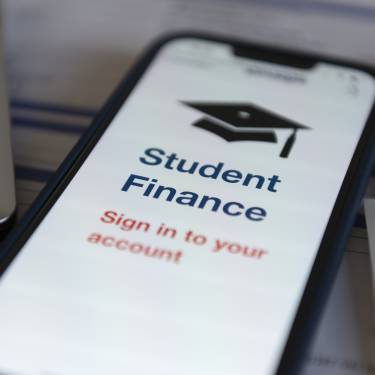Federal vs. Private Student Loans: What’s the Difference?

Figuring out how to pay for college can sometimes be just as difficult as getting into to the school of your dreams.
There are plenty of financing options. Not every student loan is the same, either, so it’s important to do your homework and figure out which borrowing option makes the most sense for your needs and goals.
The first step is to review the options between federal and private student loans.

Federal Student Loan Basics
There are two types of Federal Student Loans:
- Direct Student Loan: Subsidized and Unsubsidized
- Direct Plus Loans: Available to Parents and Graduate professional
The Direct Student Loan is awarded to students through the financial aid process. Students are encouraged to check with their school’s financial aid office for details on their financial aid application requirements.
The Direct PLUS Loan is managed outside of the financial aid process, and students are encouraged to review their school’s financial aid requirements. Schools may require a completed FAFSA on file.
The Parent PLUS loan allows the parent of a dependent student to borrow annually up to the student’s cost of attendance less any financial assistance the student is awarded.
The Grad PLUS loan is for graduate and professional students. Students borrow annually up to the student’s cost of attendance less any financial assistance the student is awarded.
Federal loans offer a fixed rate, an in-school payment deferment, repayment options, and several forgiveness initiatives.

Private Student Loans
Private student loans are offered through a lender, like your bank. A private student loan can be offered as an annual loan where an application is required every year, or a line of credit where you apply just once and draw down on the line to pay for expenses each academic year.
A line of credit has a similar structure to a credit card. It’s a loan set for what you estimate needing throughout the entirety of your education, and an amount you’re approved for, that you can draw from as needed.
This loan type helps you control what you borrow and doesn’t stick you with a lump sum you might not need. You’ll only pay back what you borrow, plus accrued interest.
With this option, you only need to apply for the funding once. Both undergraduate and graduate/professional students are eligible for a line of credit.
The benefit for this type of loan at a financial institution is that they can offer competitive rates, with options to lock in that rate for the life of the loan. Securing financing with a locked-in interest rate can help you anticipate your monthly payments when it’s time to start paying back your loan.
For this program the student is the borrower and, while a co-signer is not typically required, some students may need a co-signer to meet income and credit criteria.

When To Secure Funding
To ensure that there is enough time between your loan application getting approved, securing the actual funds, and meeting the deadline to pay the term bill, you want to get started on the financing process early.
During peak loan season—July to September— a student loan or line of credit from application to approval could take several weeks. This is because everyone is trying to secure their education financing before the school year begins. Even during an “off-season,” it could still take two weeks to get the application approved.
To avoid missing the payment deadline at the school you plan to attend, you want to get your student loan application in and approved several weeks before your first payment due date. In the case of a line of credit, you want to request funds typically days, if not a week or two, before funding is due.
Are you still looking to learn more about which financing option is right for you? Chat with a college counselor from our Student Lending Center to learn more about the education line of credit and do some research on your own to help you make an informed decision. You can also always check out Metro’s Education Loans page for more information.



